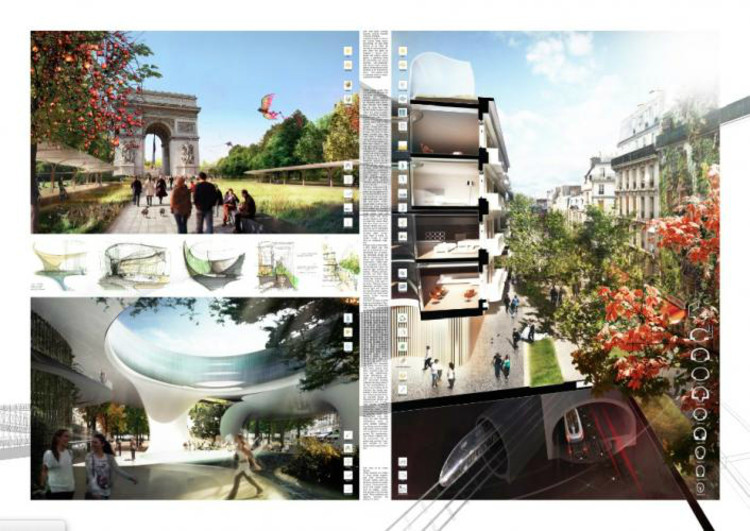
The Buckminster Fuller Institute has announced “The Living Building Challenge” as winner for the 2012 Buckminster Fuller Challenge. Dubbed “Socially-Responsible Design’s Highest Award” by Metropolis Magazine, the Buckminster Fuller Challenge annually awards a $100,000 prize to support the on-going development and implementation of a strategy that has significant potential to solve humanity’s must pressing issues.
A quote from the 2012 Jury Statement: “Deeply rooted in ecological design principles, The Living Building Challenge successfully shows how humans and their built environment can be harmoniously, benignly integrated within ecosystems. Above all, its rigorous standards and daringly innovative, revolutionary approach to building are already having a considerable impact on the thinking of designers and architects around the world, influencing all levels of design and technological approaches, radically pushing forward the field.”

The Living Building Challenge (LBC) is setting the standard for how to build in the 21st century by establishing the highest bar yet for environmental performance and ecological responsibility within the built environment – not by “fighting the existing reality”, as Buckminster Fuller suggested, but by “building a new model” and establishing new benchmarks for non-toxic, net-zero structures. And while Fuller’s own lifetime of radical design breakthroughs in shelter centered on a fully automated, mass produced livingry service industry approach to the built environment, The Living Building Challenge goes far beyond current best practices, reframing the relationship between the built and natural environments. LBC seeks to lead the charge toward a holistic standard that could yield an entirely new level of integration between building systems, transportation, technology, natural resources, and community. If widely adopted, this approach would significantly enhance the level of broad-based social collaboration throughout the design and building process and beyond, dramatically reducing the destructiveness of current construction, boost the livability, health, and resilience of communities.

LBC has already achieved substantial breakthroughs in transforming the building industries’ antiquated codes that hinder innovation. In Oregon, the LBC brought about a major regulatory reform in which grey-water and rainwater use in residential and commercial buildings is now legal throughout the state. They worked closely with Seattle’s Department of Planning and Development, which passed legislation to enable a Living Building Pilot Program. The ordinance states “the goal of the Pilot Program is to encourage the development of buildings that meet the Living Building Challenge by allowing departures from code requirements that might otherwise discourage or prevent buildings from meeting this standard. Overall, the Living Building Pilot Program is intended to: 1. Stimulate innovative development that meets the goals of the Living Building Challenge and City of Seattle design guidelines. 2. Encourage development that will serve as a model for other projects throughout the City and region and will stimulate development of new Living Buildings. 3. Identify barriers to Living Buildings in current codes and processes.” Seattle Council member Sally J. Clark said, “Living buildings could become the next quantum leap forward in development.”

Since 2010, when The Living Building Challenge was a Buckminster Fuller Challenge finalist, it has gained even more momentum, extending its reach well beyond its initial base in the Pacific Northwest and is influencing sites all over the world. They have demonstrated that their principles are feasible, replicable and translatable to a wide range of contexts, including emerging economies and lower income neighborhoods. Detailed cost analysis has shown that the Living Building standards are indeed competitive with other top level green building standards, and as electricity, fuel, and water prices continue to increase, LBC will soon gain a competitive advantage.

Buckminster Fuller issued an urgent call for a design science revolution to make the world work for all, approaching humanity’s most critical problems by anticipating what needs lay ahead and envisioning comprehensive systems that would address those needs. LBC seeks to meet that challenge by identifying the weaknesses in current green building practices, by defining an ambitious vision for a truly sustainable building industry, and by providing a clear path to get there. With Jason McLennan at its helm, the International Future Living Institute is charting a new and critically needed course in an industry that arguably remains one of the most consumptive – inspiring a new level of collaboration between building owners, construction trades, architects, engineers, and regulators. The LBC’s model of regenerative design in the built environment could provide a critical leverage point in the roadmap to a sustainable future and is an exemplary trimtab in its potential to catalyze innovation in such a high impact, high consumption industry, one heretofore notoriously slow to improve, and very wasteful with resources.
Via The Buckminster Fuller Institute
Check out Hawaii Preparatory Academy Energy Laboratory / Flansburgh Architects for a great example of a Living Building Challenge certified building.






